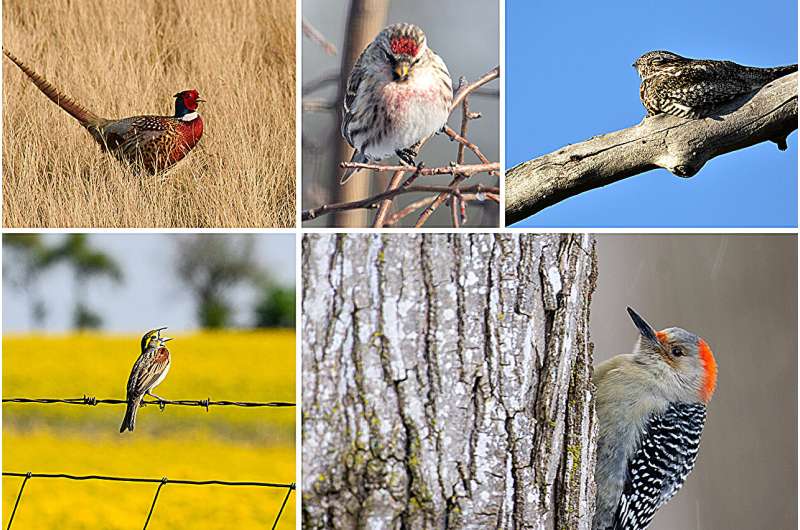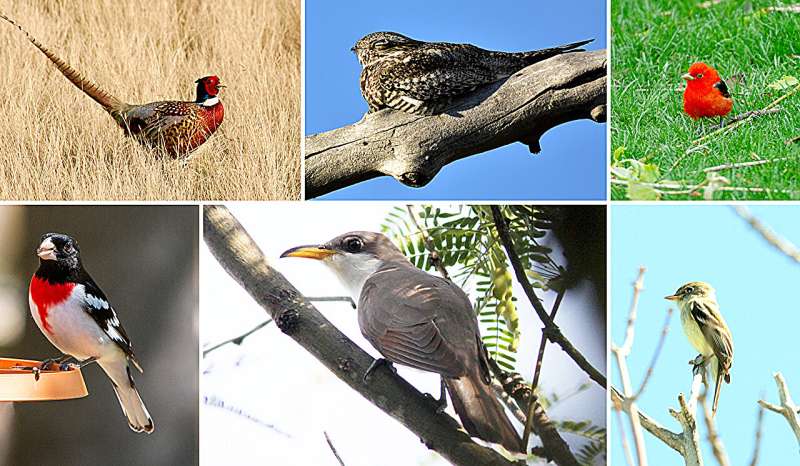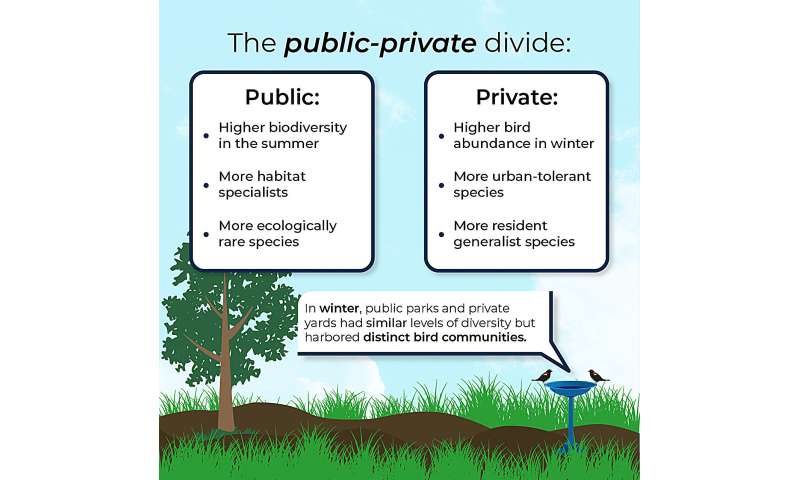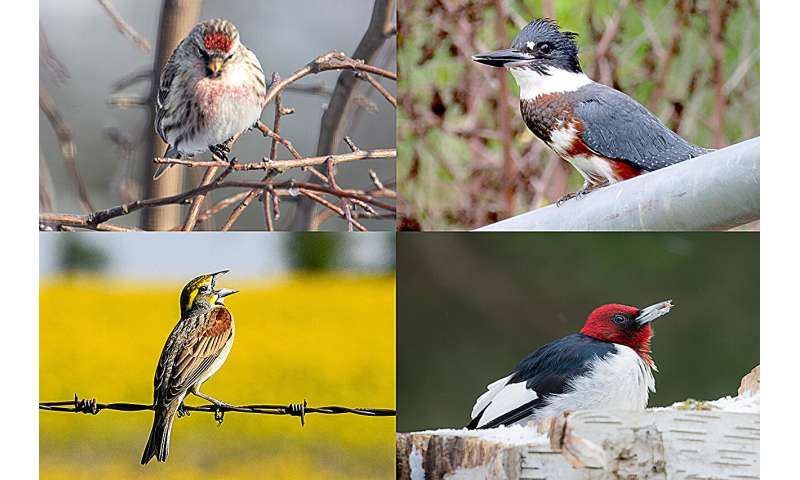
Researchers tracked bird diversity in public parks and private backyards in twin cities in Illinois with significantly different development histories and green space management practices. They found that birds rely on both public and private spaces in different seasons and for different reasons. The study linked park management practices aimed at conservation and restoration to increased bird diversity and the persistence of rarer species.
The new findings are reported in the journal Landscape and Urban Planning.
The researchers took regular snapshots of the birds in 39 public parks and 41 private yards in Urbana and Champaign, adjacent cities in East Central Illinois.
“These cities are right next to each other, they’re touching each other, but they have very different histories,” said Henry Pollock, who led the research at the University of Illinois Urbana-Champaign with Illinois natural resources and environmental sciences professor Carena van Riper and former U. of I. evolution, ecology, and behavior professor Mark Hauber. Pollock is now the executive director of the Southern Plains Land Trust in Lamar, Colorado, and Hauber is the executive director of the Advanced Science Research Center at the City University of New York.
“We wanted to understand how differences between these two towns affect the birds. We also wanted to see how the structure of bird communities might vary across the public/private divide in different seasons,” Pollock said.
Urbana is smaller than Champaign, with a population of about 38,000 versus Champaign’s 88,000. Urbana was founded in 1822 and developed amidst an ancient hardwood forest known as the Big Grove. Champaign sprang up along the railroad in the 1850s.

Urbana has more than twice the public green space of Champaign and many more trees, with more than 100,000 trees established in private yards and thousands more in parks. Champaign has more parks, but they are smaller and focus primarily on providing infrastructure for human recreation. Urbana’s park district has a more explicit emphasis on conservation and habitat restoration.
Three independent expert observers visited each of the 80 sites multiple times in summer and winter to conduct visual and auditory surveys, recording each bird species observed. The team also collected physical, climate and ecological data from each site.
As expected, Urbana had more vegetation, and the green spaces were cooler in summer than those of Champaign. Urbana parks and backyards also supported more bird diversity. Of the 15 bird species seen only in Urbana in summer, the team recorded the belted kingfisher, scarlet tanager, Kentucky warbler, blackpoll warbler, pileated woodpecker and yellow-billed cuckoo.
In winter, Urbana green spaces hosted 12 species not seen in Champaign, including the winter wren, yellow-bellied sapsucker, sharp-shinned hawk, hermit thrush, swamp sparrow and yellow-rumped warbler.
In general, public spaces like parks and preserved prairies hosted a higher diversity of birds in the summer and supported more ecologically rare species. Backyard spaces also played an important role in summer, hosting a subset of the bird species found in parks. In winter, backyards supported distinct bird communities with levels of diversity similar to those of public parks.
Backyards also supported more birds in the winter, the researchers found. This result from backyards offering more sheltered spaces, warmth and—when bird feeders were present—food during the winter months.
“Perhaps this will allow people to see that there are small but important behaviors that will influence birds and increase bird diversity,” van Riper said. “These include things like putting up bird feeders, particularly in the winter when food sources are low, planting native vegetation or setting up bird baths.”
-

Public and private spaces support birds in different ways. Credit: Bryan Lin
-

Birds seen more often in Urbana than Champaign included, clockwise from top left, common redpolls, belted kingfishers, red-headed woodpeckers and dickcissels. Credit: Photo of belted kingfisher by Jessica Bolser/USFWS. All other photos by Zak Sutton.
The larger parks appeared to be essential to bird diversity, with nearby backyard spaces supplementing those spaces and offering different kinds of support.
The contrasts between bird life in the public green spaces of Champaign and Urbana were obvious, Pollock said.
“In places where there’s been active management to try to increase plant diversity and get some native plant cover back, it has had a big impact on the bird communities,” he said. “Rare species and specialist species were by far more diverse in public parks in Urbana, in particular.”
Hauber was struck by the relationship between city history and management styles and bird diversity in each city.
“To find these consistently significant differences between Urbana and Champaign because of what people have done to the cities themselves is super-interesting and relevant for discovering the kind of impact we are continuing to have on nature,” he said.
More information:
Henry S. Pollock et al, The public–private divide and seasonal variation shape bird diversity in greenspaces of two neighboring midwestern USA cities, Landscape and Urban Planning (2024). DOI: 10.1016/j.landurbplan.2024.105060
Citation:
Backyards, urban parks support bird diversity in unique ways (2024, April 22)
retrieved 22 April 2024
from https://phys.org/news/2024-04-backyards-urban-bird-diversity-unique.html
This document is subject to copyright. Apart from any fair dealing for the purpose of private study or research, no
part may be reproduced without the written permission. The content is provided for information purposes only.
